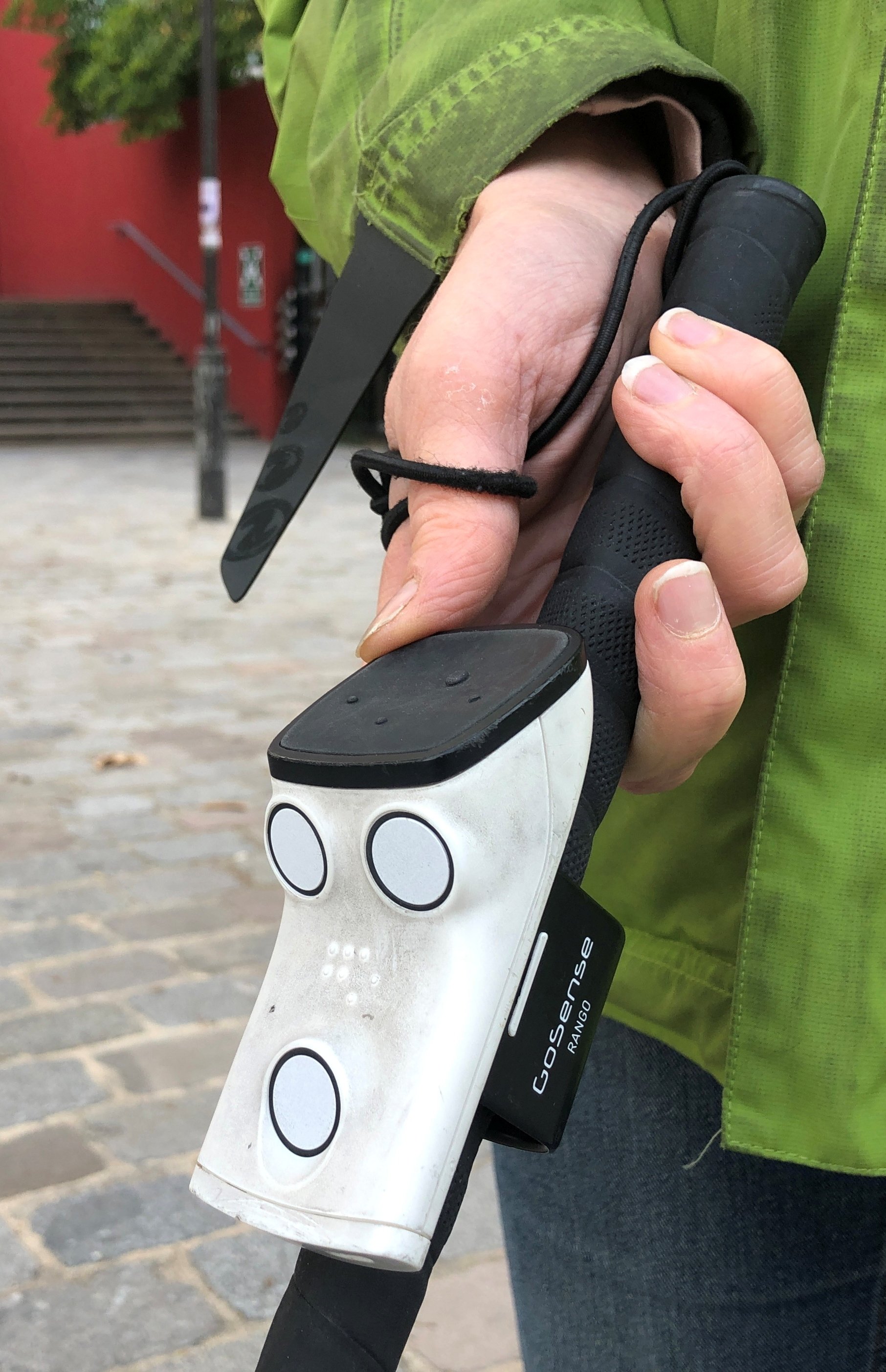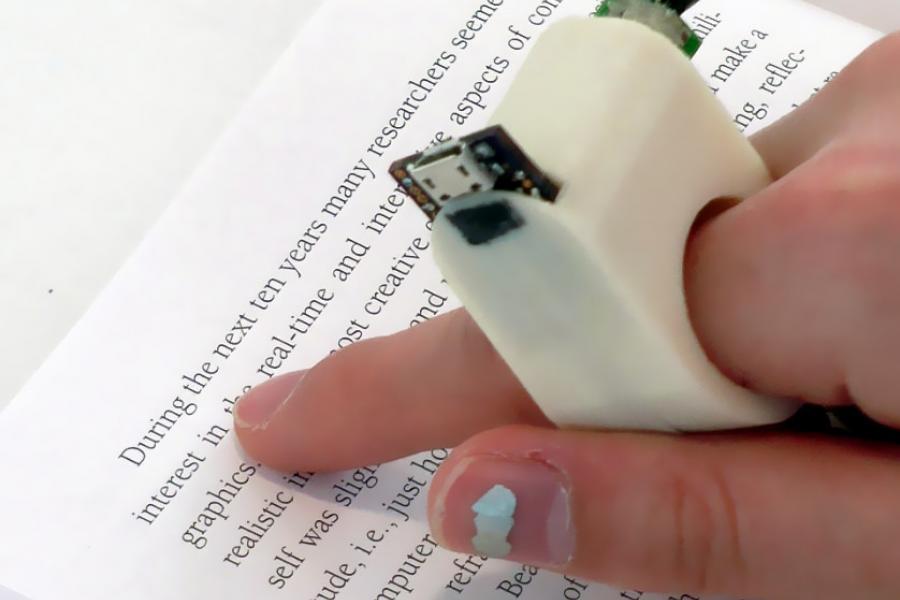Enhance Accessibility with Braille Displays and Notetakers
Wiki Article
Discover Innovative Tools Made for the Aesthetically Impaired
The advancement of cutting-edge tools for the aesthetically impaired stands for a significant advancement in access and freedom. Technologies such as wise glasses with AI abilities and mobile applications designed to offer acoustic descriptions are improving day-to-day experiences for customers. Additionally, wearable tools that use haptic comments boost ecological awareness, while modern-day Braille advancements provide brand-new ways to involve with text. As these tools remain to progress, their influence on the lives of those with visual problems elevates vital concerns about the future of inclusivity and freedom in numerous facets of life. What lies ahead in this technical landscape?Smart Glasses for Navigation

Smart glasses created for navigation are reinventing the means aesthetically damaged individuals interact with their setting. These innovative gadgets utilize a mix of cam technology, expert system, and auditory feedback to provide real-time info regarding surroundings. By utilizing obstacle detection systems, wise glasses can signal users to possible risks, allowing safer wheelchair in both unfamiliar and familiar setups.
The integration of GPS technology better improves navigation capacities, enabling users to receive acoustic instructions as they relocate. This hands-free approach not only promotes freedom however also encourages visually damaged individuals to navigate urban landscapes with increased confidence. In addition, many wise glasses are outfitted with attributes that determine sites and road indicators, offering contextual info that boosts the user experience.
Furthermore, the advancement of these devices is continuously progressing, with business functioning to boost the precision of object acknowledgment and increase the array of navigational functions. As clever glasses come to be a lot more affordable and easily accessible, they hold the potential to considerably change every day life for visually impaired individuals. Ultimately, these cutting-edge tools stand for an essential step towards inclusivity, offering boosted flexibility and a better feeling of freedom for individuals navigating the globe around them.

Mobile Apps for Daily Living
Just how can mobile applications improve the every day lives of aesthetically damaged individuals? Mobile apps are reinventing the means aesthetically damaged individuals browse their settings, manage everyday tasks, and accessibility information. These applications offer essential assistance via numerous functionalities, fostering freedom and improving high quality of life.A number of ingenious mobile apps are developed specifically for everyday living. For example, apps like Be My Eyes attach visually damaged individuals with sighted volunteers by means of video calls, allowing them to get real-time support with jobs such as checking out labels or navigating unfamiliar rooms. Similarly, Seeing AI, created by Microsoft, makes use of fabricated knowledge to explain surroundings, read text, and recognize things, successfully transforming a smart device right into an effective device for daily aid.
Additionally, navigating applications customized for the visually damaged, such as Aira and BlindSquare, supply audio-based instructions and environmental info, enabling customers to traverse their surroundings securely and with confidence. Beyond navigating and instant support, mobile apps additionally support company and job administration, with attributes that aid users set reminders, create to-do listings, and track visits. In recap, mobile applications serve as essential resources, encouraging visually damaged individuals to lead even more independent and satisfying lives.
Wearable Technologies for Help
Empowerment with innovation is progressively apparent in the realm of wearable gadgets made to assist aesthetically damaged individuals. These ingenious devices incorporate flawlessly into life, improving navigating and offering crucial responses to individuals. For example, wise glasses furnished with cameras can review and identify faces message aloud, allowing users to communicate more with confidence in social and expert setups.Another remarkable improvement is making use of haptic comments systems in wearable tools. These systems use resonances or various other responsive signals to convey information about the customer's setting, such as obstacles or changes in surface, improving mobility and safety and security. Wearable modern technologies additionally consist of wristbands that link to mobile phones, alerting customers to notices with subtle vibrations, thus boosting connection without reliance on visual cues.
As these innovations proceed to progress, they are not only improving independence for visually damaged individuals however additionally fostering a better sense of inclusion in culture. By connecting the space in between difficulties encountered in daily living and the potential for freedom, wearable technologies function as crucial tools in the pursuit for equal rights and empowerment for those with aesthetic disabilities.
Sound Summary Tools
Audio summary tools play a vital function in improving ease of access for aesthetically impaired individuals, supplying them with the capability to engage with aesthetic media. Speech-to-text devices for low vision. These devices offer narrated summaries of vital aesthetic elements in films, tv shows, and live performances, ensuring that users can fully understand the context and feelings shared through visualsSound description can be incorporated right into various platforms, consisting of streaming solutions, cinema screenings, and live cinema. Many popular streaming solutions currently include audio summary as an ease of access attribute, allowing customers to choose it conveniently. In enhancement to conventional media, specialized apps likewise exist, offering audio summaries for art events, galleries, and various other cultural events.
The efficiency of audio summary depends upon the ability of the storytellers, who should communicate aesthetic details succinctly without interfering with the original sound. Technologies in this area are also leading the way for even more tailored experiences, where individuals can adjust the level of detail and pacing according to their preferences.
Braille Innovations and Gadgets
Braille Bonuses advancements and tools have actually substantially changed the means visually damaged people communicate with message and details. Modern improvements have actually led to the growth of versatile devices that improve literacy and self-reliance amongst users. Especially, Braille show modern technologies have evolved, permitting vibrant reading experiences. These gadgets transform electronic text right into Braille, enabling individuals to access a vast range of details on smart devices, computer systems, and tablet computers.
In addition, mobile Braille notetakers combine conventional Braille input with contemporary capabilities, facilitating note-taking, scheduling, and document editing and enhancing on the move. Speech-to-text devices for low vision. These compact devices i was reading this usually include text-to-speech capacities, connecting the void in between Braille and acoustic information
In addition, cutting-edge Braille printers have emerged, allowing users to generate Braille labels, records, and instructional products effectively. This accessibility fosters greater involvement in expert and educational atmospheres, ultimately advertising inclusivity.
Additionally, research study into wise Braille technologies remains to broaden. Instruments that include expert system are being checked out to provide real-time navigating support and contextual details, boosting the individual experience in diverse setups. Generally, these innovations mirror a commitment to equipping aesthetically impaired people via innovation, ensuring they can quickly gain access to and involve with the world around them.
%20(1).webp)
Conclusion
The development of ingenious devices for the visually impaired significantly enhances freedom and quality of life. Smart glasses, mobile applications, wearable innovations, audio summary tools, and Braille advancements collectively empower individuals by supplying necessary navigating support, environmental awareness, and enhanced analysis experiences. These modern technologies not only foster better inclusion yet also advertise freedom in everyday tasks, ultimately contributing to see here now an extra equitable and easily accessible society for aesthetically damaged individuals. Proceeded advancement in this field holds pledge for further enhancements.As wise glasses end up being a lot more accessible and budget friendly, they hold the potential to dramatically transform daily life for visually impaired users. Mobile apps are changing the way visually damaged users navigate their atmospheres, handle day-to-day tasks, and accessibility information. Apps like Be My Eyes connect aesthetically impaired individuals with sighted volunteers by means of video clip calls, enabling them to obtain real-time aid with jobs such as reading labels or navigating unfamiliar areas.Additionally, navigation apps customized for the aesthetically damaged, such as Aira and BlindSquare, supply audio-based directions and environmental information, making it possible for users to traverse their surroundings safely and confidently.The improvement of innovative tools for the visually impaired significantly improves self-reliance and high quality of life.
Report this wiki page